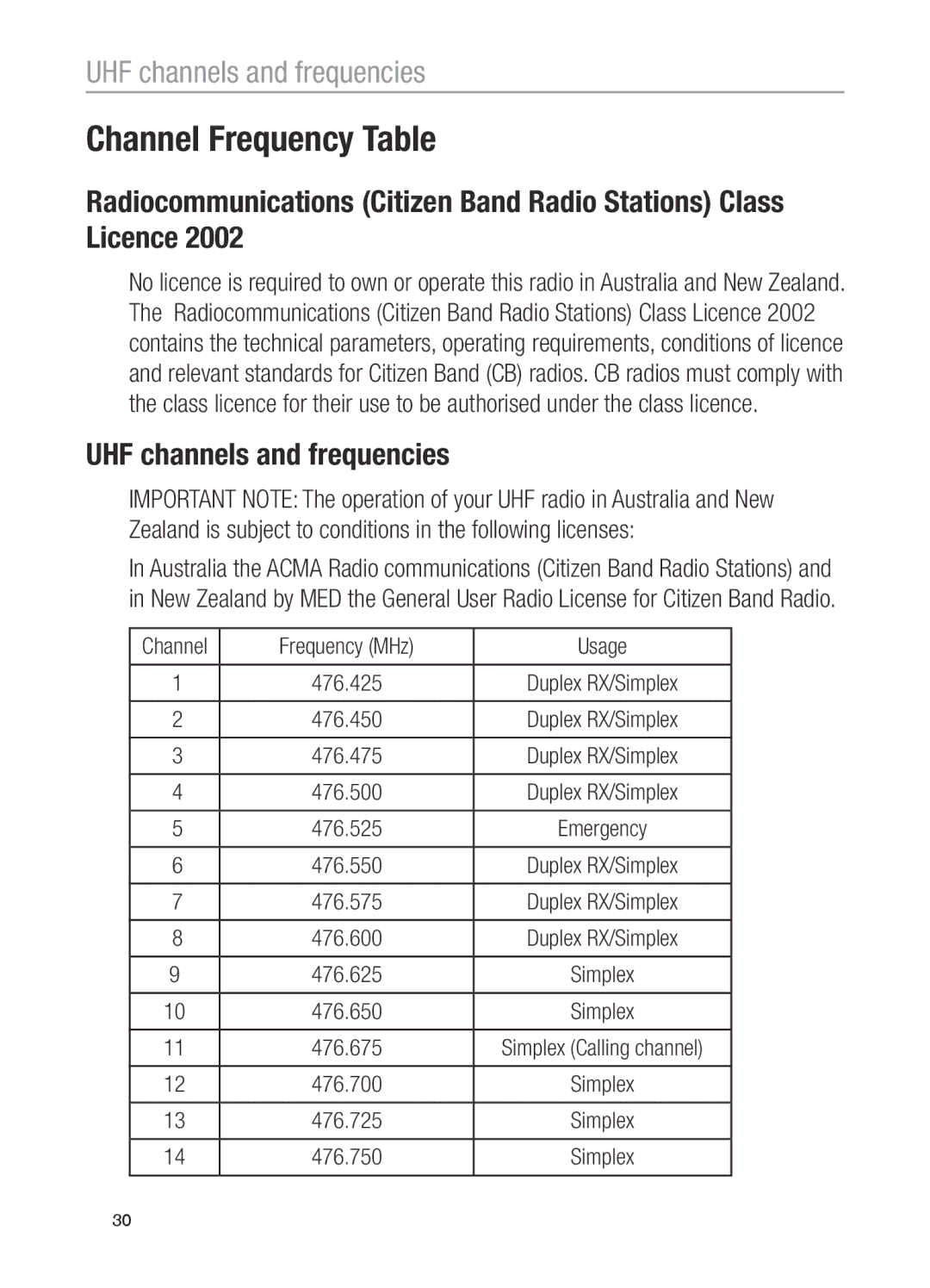UHF200, UHF100 specifications
Oricom, a leader in communication solutions, has made significant advancements in the world of UHF radios with their UHF100 and UHF200 models. These devices cater to a wide range of users, from outdoor enthusiasts to professionals in various industries, emphasizing durability, reliability, and ease of use.The Oricom UHF100 is designed with simplicity in mind. Equipped with 80 UHF channels, it allows users to easily switch between channels for optimal communication. This model features a compact design, making it highly portable and easy to fit into any pack. It is also engineered with a robust body that can withstand outdoor conditions, proving ideal for camping, hiking, and other adventures. The UHF100 offers an impressive transmission distance, delivering clear audio even in relatively challenging environments.
On the other hand, the Oricom UHF200 takes the user experience to the next level. This model boasts an extended range and enhanced audio clarity, making it suitable for higher-demand applications. With 80 UHF channels like the UHF100, the UHF200 also incorporates advanced features such as a high-capacity rechargeable battery, ensuring prolonged usage without frequent recharging. The UHF200 includes an LCD screen that displays vital information such as channel number and battery life, making it user-friendly.
One of the key technologies employed in both models is the CTCSS (Continuous Tone Coded Squelch System), which helps reduce background noise and ensures that users can communicate effectively without unwanted interference. This feature is particularly useful in busy environments, where multiple parties may be using UHF radios simultaneously.
Both the UHF100 and UHF200 come with an array of accessories that enhance their usability. Belt clips, chargers, and earpieces can be included, making these radios versatile for various applications. They also adhere to stringent Australian communication regulations, ensuring you can use them without any compliance concerns.
In summary, the Oricom UHF100 and UHF200 radios are steadfast companions for anyone in need of reliable communication equipment. With robust designs, user-friendly features, and advanced technologies, these models are built to meet the demands of both casual and professional users alike. Whether you're traversing the great outdoors or coordinating a team in the field, Oricom's UHF radios deliver exceptional performance where you need it most.
